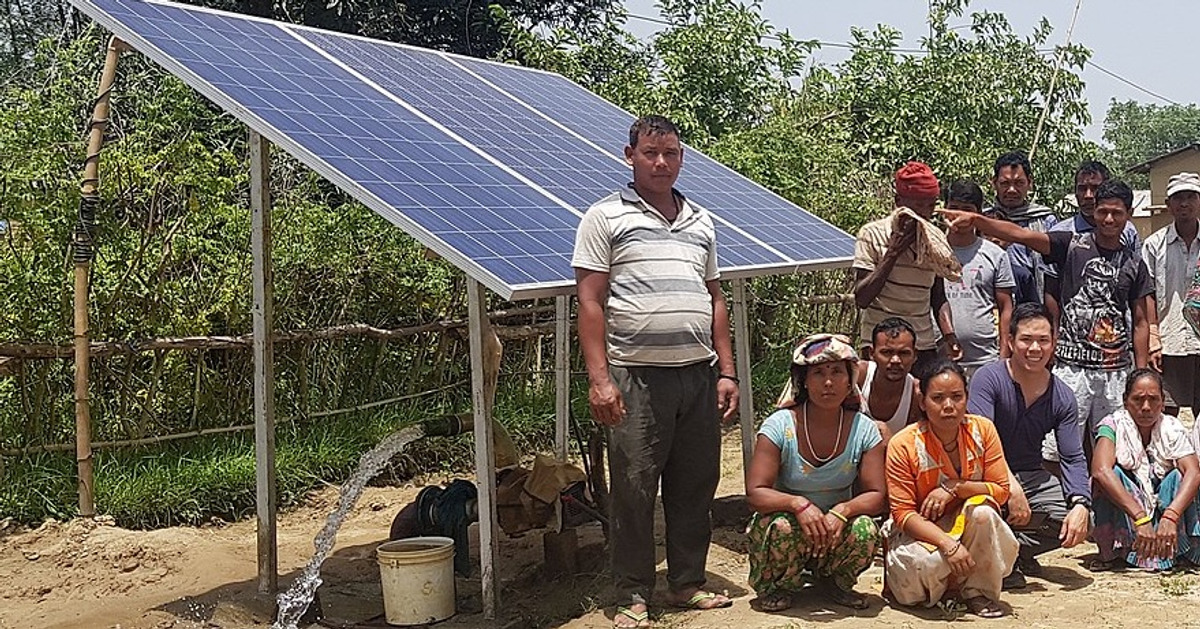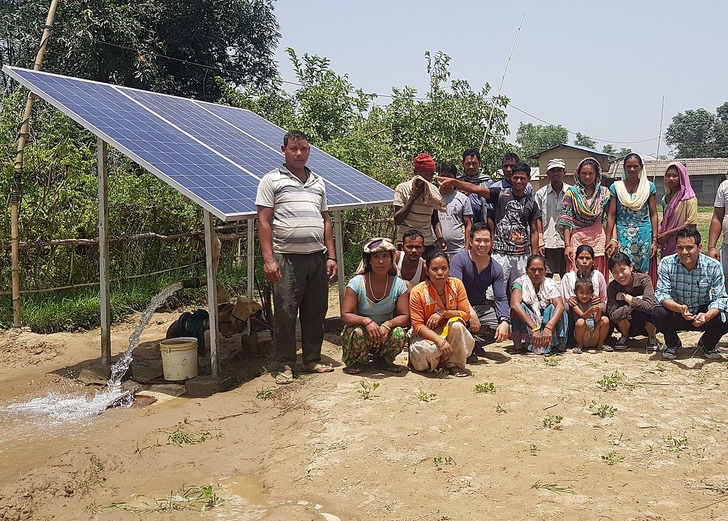That's great! Now it's important to install it in all the areas that need drinking water ?
Kenya Installs the First Solar Plant That Transforms Ocean Water Into Drinking Water, and It Could Be the Solution to the Global Lack of Water

Around 2.2 billion people in the world don’t have access to drinking water services that are managed safely. This happens on a planet that is 71% covered by that essential element for life. What seems like a contradiction, may actually be the key challenge for the future of humanity: How can we turn the seawater of the oceans into drinking water. The answer seems to be located in a small town in Kenya, near the border of Somalia.
Bright Side will tell you all the details about this new solar water treatment plant developed by the NGO (non-governmental organization) GivePower. This pilot test has already improved the lives of residents of Kiunga, a small town in Kenya, and they’re seeking to reproduce the technology in other parts of the world. In the end, you will find a bonus with figures on world water consumption and the value of using it responsibly.
The plant transforms saline water into drinking water.
One in every 3 people in the world doesn’t have access to drinking water, according to a report published by UNICEF and the World Health Organization. The conditions are even worse in sub-Saharan Africa. This is why the area was chosen to install the first solar plant system that transforms the Indian Ocean’s saltwater into clean drinking water. It’s been in operation since last year.
The name of the fishing town where the project is successfully operating is Kiunga. It was funded by the non-profit Givepower, and thanks to its achievements, the organization is already planning on replicating the project in other countries like Colombia and Haiti.
The system creates drinking water for 35,000 people per day.
A typical desalination plant consumes high amounts of power, the process is expensive, and it can only operate in areas that have enough facilities to produce and distribute that much energy. The NGO solved these problems by using a technology they call “solar water farms,” which involve the installation of solar panels that are able to produce 50 kilowatts of energy, high-performance Tesla batteries to store it, and 2 water pumps that operate 24 hours a day.
Each solar water farm can generate drinking water for 35,000 people every day. Besides, according to GivePower, the water quality is much higher in the long run and doesn’t seem to have any negative environmental effects.
Before this the residents of Kiunga had to travel for about an hour to access their only source of water, and it was dirty.
After the rainy season produced by the monsoon wind, Kiunga becomes an area of extreme drought, and its 3,500 residents were forced to travel for an hour to collect water. The only source they used to have available, came from a well located on the same channel that animals used for bathing. It was full of pollutants and parasites that could potentially cause diseases like E. coli and even death.
Before the implementation of this technology, they were obligated to drink, bathe, and wash their belongings with that dirty and salty water. “You see children inside of these villages, and they’ve got these scars on their stomachs or their knees because they got so much salt in their wounds. They were basically poisoning their families with this water,” says Hayes Barnard, president of GivePower, in an institutional video.
They plan to build more plants to alleviate water scarcity.
By 2025, half of the world’s population will live in areas facing water scarcity. The reuse of wastewater to recover nutrients or energy is becoming a central strategy. It’s the same regarding the treatment of seawater. Only 2.5% of the planet’s water is freshwater, a number that is declining with the effect of global warming on glaciers and icebergs.
Facts about water consumption and conservation
- World Water Day is celebrated annually on March 22nd to raise awareness about the conservation, development, and responsible consumption of water resources.
- About 3,000 liters of water are required to produce enough food to meet a person’s daily needs.
- The average person consumes the equivalent of more than 100,000 glasses of water per year when taking 10-minute daily showers.
- Downloading just one single gigabyte (GB) of data from the internet may use up to 200 liters of water to cool the servers used in computer centers to allow connectivity.
- 80% of wastewater is released into waterways without proper treatment.
- Latin America holds abundant water resources: It gets almost 30% of the entire world’s rainfall and has 28,000 cubic meters of water per capita per year, higher than the world average.
- Among the Sustainable Development Goals to be achieved by 2030, The United Nations established a goal to reach universal and equal access to drinking water, adequate sanitation and hygiene services, and to reduce water pollution.
What do you think humanity can do to care more about water? Do you have any advice on how to reduce water consumption? Tell us in the comment section!
Comments
Good job volunteers! Your help was needed. I'm happy to read such news :)
this gives me so much hope ???
World needs more of such promising and useful projects!
what a great news!
Related Reads
12 Dark Family Secrets That Could Have Been Movie Plot Twists

10 Times Kindness Melted the Coldest Hearts

14 Entitled People Who Think the World Revolves Around Them

I Kicked My Stepson Out—My Son Comes First, and I Won’t Apologize

My Husband’s Ex Still Calls Him for Favors—So I Gave Him a Taste of His Own Medicine

I Found Out My Kids Were Plotting Against Me—They Weren’t Ready for My Payback

My Son Thought I’d Be His Free Driver—But I Refused to Waste My Retirement

My MIL Called Me a Bad Mom for the Mess—My Husband’s Response Was the Real Shock

I Refuse to Let My DIL Get My Late Son’s Inheritance

10 People Who Chose Kindness When They Had Every Reason Not To

I Refused to Walk Away From My Dream, Now Everything’s on the Line

11 Real Stories That Prove a Mother’s Love Knows No Limits

